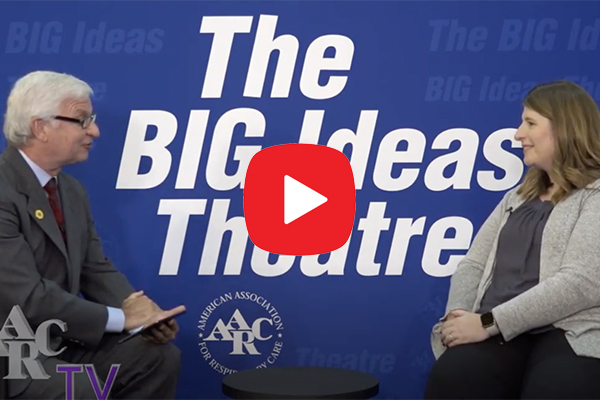
What does it mean to help COPD patients avoid having to go to the hospital? How is this a benefit for the patient? AARC member Renato Galindo, BSRC, RRT, CPFT, AE-C, shared his thoughts on the subject as well as tips for RTs.
What does it mean to help COPD patients avoid having to go to the hospital?
Educating your patients on the importance and value of disease-management at home strengthens their overall health care. This can result in reducing the times your COPD patients need to come to the hospital for care.
For Galindo, this means RTs “have to be proactive.”
“Working bedside, we focus only on the acute stage, keeping the patient alive until the end of the shift. We never think: what will it take to safely discharge this patient home and stay home?” Galindo said. “It is important that we think about what the patient will need a week or a month from now.”
What is the value for the patient?
Galindo feels that avoiding hospitalizations help maintain and possibly improve the quality of life for the patients.
There are some patients RTs see repeatedly, often coming to the emergency rooms.
“They do not want to be here any more than we want them to be,” Galindo said. “They want to be able to stay home, be healthy, participate in activities that bring them joy. As RTs, we can assist in helping COPD patients achieve those goals.”
Galindo shared an example of a female COPD patient, in her mid-70s:
“She was a regular re-admit for exacerbation of COPD. She was homebound and rarely left home due to her COPD.
When she finally had to be intubated, it was the moment her family reacted and asked for a change. After she was extubated, she was referred to a pulmonologist, placed on controller medication and referred to our outpatient pulmonary rehab.
On her first visit, it was obvious she did not want to be there. She was cursing the whole time her intake was being done.
After six weeks, she was a completely different person. She was sociable, encouraging other patients, and started running her own errands.
She is now a regular at a local gym and has not been admitted in three years.”
How can RTs help?
- Ensure an accurate diagnosis. At times, our physicians are diagnosing patients with COPD without a pre/post spirometry. It is of great importance to have an accurate diagnosis and staging for the patient to receive the best care. (Galindo)
- Partner up with your hospital’s case managers or discharge planners. Learn and understand how funding sources work. Having this knowledge allows us to know what we can and cannot provide for our patients. (Galindo)
Looking for more COPD resources?
- Webcast: “The COPD National Action Plan: Where did it come from & what does it mean to respiratory therapists?”
- Connect with your colleagues in the COPD Best Practices Community at AARConnect
- Find more at our COPD Awareness Month post
Email newsroom@aarc.org with questions or comments, we’d love to hear from you.














